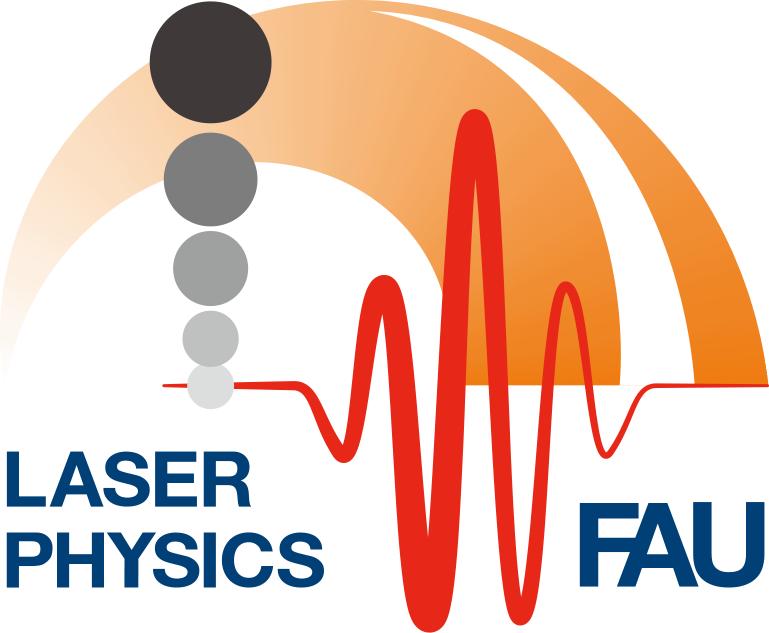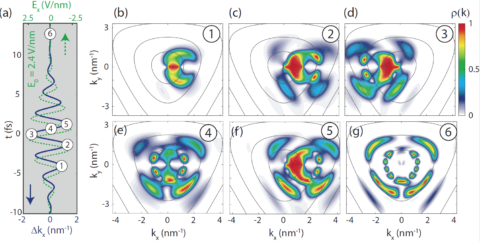Sub-cycle temporal evolution of light-induced electron dynamics in hexagonal 2D materials – accepted in Journal of Physics: Photonics
Controlling electrons with optical fields of few-cycle laser pulses opens an avenue to coherently manipulate electron trajectories inside of materials. This control gives access to rich physics such as quantum path interference [1-3] and topological effects [4]. Recently we could experimentally demonstrate that electrons in graphene undergo intraband motion and interband transition in a combined fashion, driven with a few-cycle laser pulse. Given the short laser pulse duration, these processes are fully coherent, enabling interference of different quantum paths in graphene [1-3]. Here we numerically study temporally resolved electron dynamics in 2D materials (see Figure for the temporal evolution of the conduction band population near the Dirac point). In addition, we predict these processes to be even stronger in materials with a bandgap close to the photon energy. Such materials are, for examples, transition metal dichalcogenide (TMDC). Our results will be published in the Special Issue on Attosecond Technology and Science edited by our colleagues Jens Biegert, Francesca Calegari, Nirit Dudovich, Fabien Quéré, and Marc Vrakking. The manuscript can already be downloaded here.
[1] T. Higuchi, C. Heide, K. Ullmann, H. B. Weber, and P. Hommelhoff, Light-field-driven currents in graphene, Nature, 550, 7675 (2017).
[2] C. Heide, T. Boolakee, T. Higuchi, H. B. Weber, and P. Hommelhoff, Interaction of carrier-envelope phase-stable laser pulses with graphene: the transition from the weak-field to the strong-field regime, New J. Phys., 21, 4 (2019).
[3] C. Heide, T. Higuchi, H. B. Weber, and P. Hommelhoff, Coherent Electron Trajectory Control in Graphene, Phys. Rev. Lett., 121, 20 (2018).
[4] SA Oliaei Motlagh, F. Nematollahi, V. Apalkov, and MI Stockman, Topological resonance and single-optical-cycle valley polarization in gapped graphene, Phys. Rev. B, 100, 115431 (2019).

